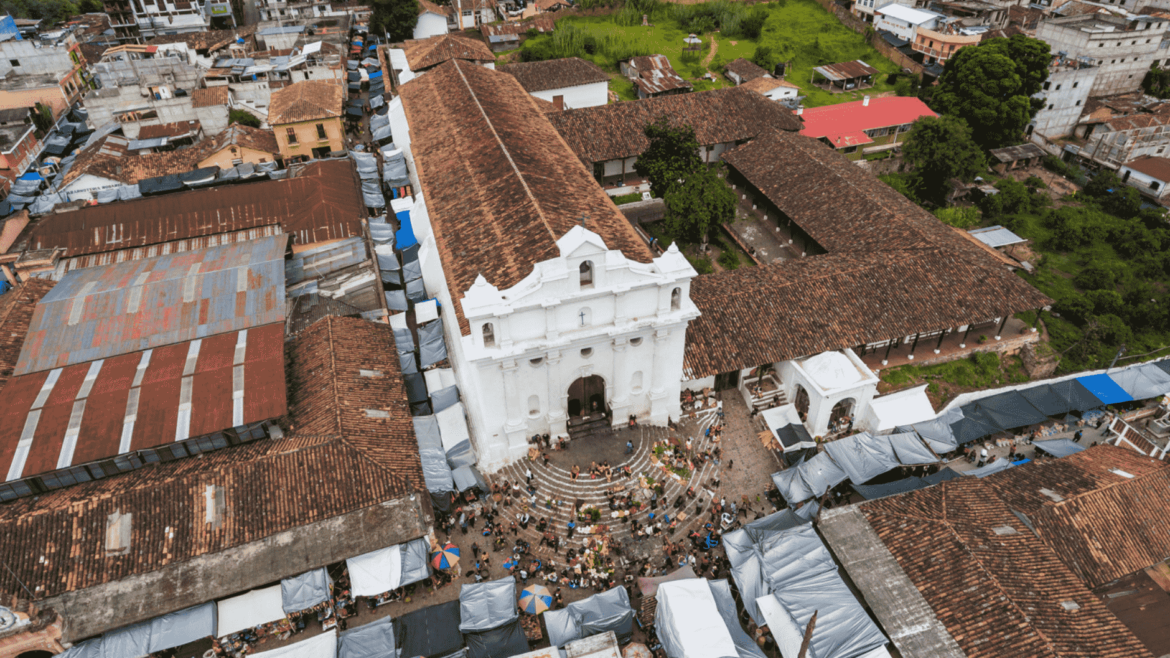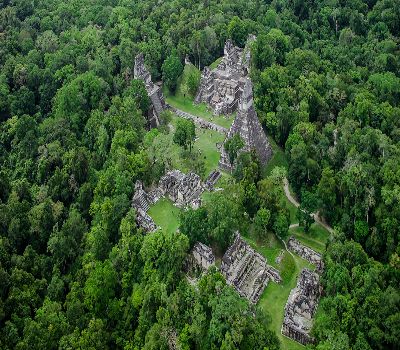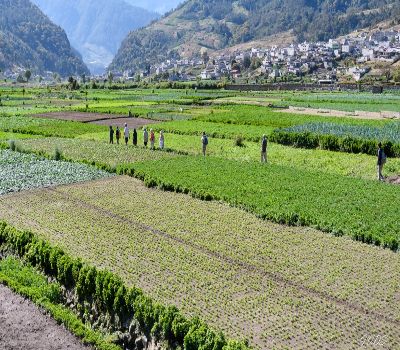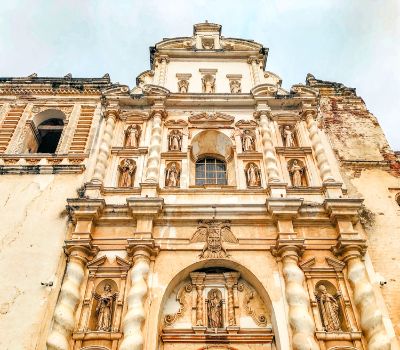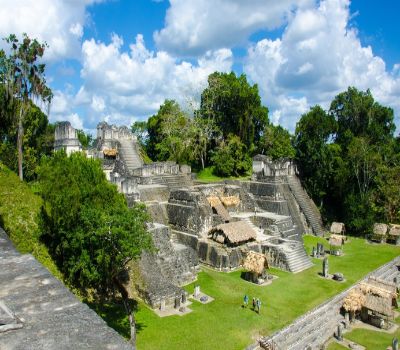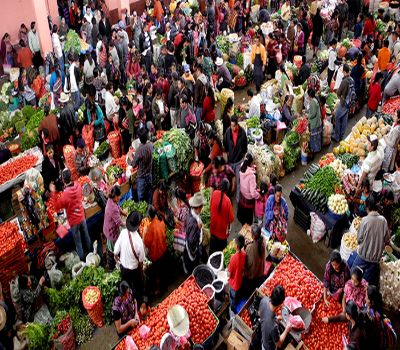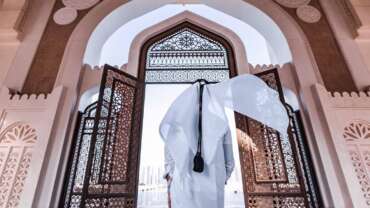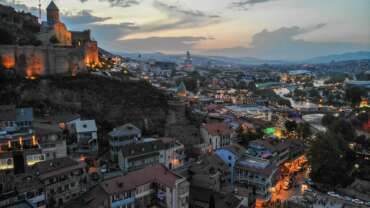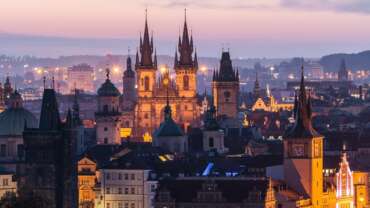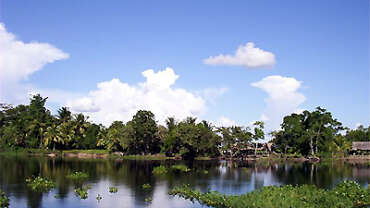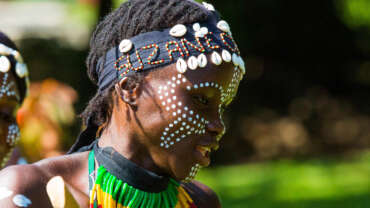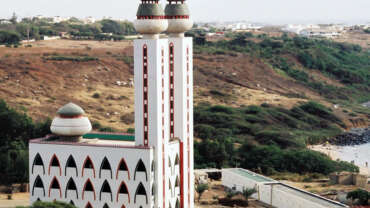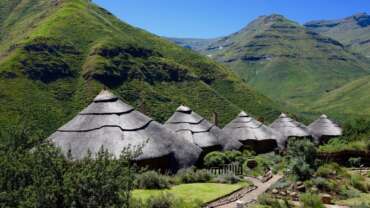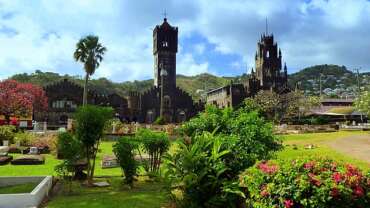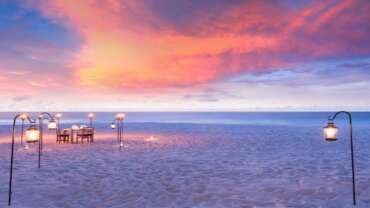Guatemala - Soul of the Earth
Guatemala, a Central American country south of Mexico, is home to volcanoes, rainforests and ancient Mayan sites. The capital, Guatemala City, features the stately National Palace of Culture and the National Museum of Archaeology and Ethnology. Antigua, west of the capital, contains preserved Spanish colonial buildings. Lake Atitlán, formed in a massive volcanic crater, is surrounded by coffee fields and villages.
GUATEMALA, HEART OF THE MAYAN WORLD
Alive, magical, mystical and ancestral. Its history goes back to four thousand years, when the Mayan civilization emerged, whose legacy remains today with the traditions and culture of its people, Guatemala is a country of extraordinary cultural and natural richness and with a privileged geographical location. The distances from place to place are short, allowing you to visit several regions in the same trip.
It is a unique country, of adventure, unforgettable, between its past and present, in addition to the diversity of activities that it offers to the visitor. Known as the country of the eternal spring, it enjoys a pleasant climate that allows to visit it at any time of the year. In addition, it offers several possibilities of access from any part of the world, with two international airports: the Aurora, located in the capital city; And Mundo Maya, located in the Department of Petén.
History of Guatemala
Precolonial period
The ancient Maya were one of the most highly developed peoples of precolonial America, boasting a sophisticated calendar, astronomic observatories, and construction skills. During the Classic Period dating from 300 to 900 CE, the Maya built the majority of their cities. The causes of the sudden abandonment of many Mayan cities starting about 850 CE are still being debated, but a combination of soil exhaustion, climate change, and armed conflict may have contributed to the cities’ decline. When Spanish conquerors arrived in the 16th century, they found many cities in ruins and encountered little organized resistance. Still, isolated bands of Maya-speaking peoples avoided Spanish control for many years in the colonial period.
The colonial period
Under the Spanish, a capital was reestablished at the nearby location of present-day Antigua Guatemala. The capital achieved a certain magnificence, and the other major towns acquired some aspects of Spanish culture, but the outlying areas were only lightly affected. When the capital was razed by a series of earthquakes in 1773, it was moved by royal order to the present site of Guatemala City.
Compared with colonial Mexico or Peru, both of which had large deposits of precious metals, colonial Guatemala developed no great degree of economic prosperity. The cultivation for export of agricultural staples, principally cacao (the source of cocoa beans) and indigo, by Indian or African slave labour was the major economic activity, exclusive of production for subsistence. Toward the end of the colonial period, the production of cochineal, a red dye derived from the bodies of insects, competed with the other agricultural exports. Industrial products from England, despite the efforts of Spanish authorities to exclude them, came to Guatemala via the Caribbean and Belize. Commerce, however, was never extensive; a satisfactory port was never developed, internal transportation was difficult, and pirates harassed the coasts and preyed on shipping. The importance of Guatemala City lay in the fact that it was the administrative and religious centre of the entire region between Mexico and Panama, being the headquarters of the captain general, the high court (Audiencia), and the archbishop. The modern states of El Salvador, Honduras, Nicaragua, Costa Rica, and Chiapas, Mexico, were provinces under Guatemala’s jurisdiction in colonial times.
The postcolonial period
Following independence from Spain (1821) and Mexico (1823), Guatemala was the political centre of the United Provinces of Central America. The principal factor in the collapse of the federation was the backcountry uprising in Guatemala led by Rafael Carrera, who established himself as the military arbiter of the state (1838) and, from the executive’s chair or from behind it, controlled policy until his death in 1865. Elections were dispensed with in 1854, when the presidency was conferred upon him for life.
Carrera, who enjoyed support from Indians as well as from conservative estate owners, returned Guatemala to a regime similar to that of the colonial period. He restored the church to its position of privilege and power and catered to the aristocracy. Carrera followed a nationalistic policy, and in March 1847 he formally declared Guatemala an independent and sovereign nation. In 1859 he failed to get Britain to follow through on a treaty defining the status and boundaries of British Honduras, an issue that remained unsettled even after British Honduras became independent as Belize.
In 1871 a revolution headed by Miguel García Granados and Justo Rufino Barrios overthrew Gen. Vicente Cerna, Carrera’s conservative successor in office, and inaugurated a period of liberal ascendancy that extended almost unbroken to 1944. After a brief period in the presidency, García Granados ceded to Barrios (1873), who became known as the Reformer because of the sweeping changes he introduced.
With the approval of the assembly, Barrios broke the power of the local aristocracy; brought the church under civil control and confiscated its properties; instituted lay education; promulgated a new constitution (1876); fostered the construction of roads, railways, and telegraph lines; encouraged development by private initiative of Guatemala’s resources; and opened the country to foreign capital. His government promoted the cultivation of coffee to replace the dye products, which were now being produced artificially in Europe, and enacted legislation that assured producers of a ready supply of labour. By the end of his administration, coffee was the number one export of Guatemala. Barrios also took steps to professionalize the Guatemala military. He was an ardent exponent of a Central American union, and, when political means failed to produce results, he invaded El Salvador in order to force it to join the union. However, he was killed at the Battle of Chalchuapa (1885), and the movement collapsed.
After the death of Barrios, Manuel Lisandro Barillas occupied the presidency. He was succeeded by José María Reina Barrios, a nephew of “the Reformer,” who was elected in 1892 and assassinated in 1898. Manuel Estrada Cabrera then became provisional president, regularized his status by an election, and by repeated reelections maintained himself in power until leaders of the opposition Unionist Party forced him from office by having the assembly declare him insane (1920). During his long tenure, Estrada Cabrera fostered economic development and progress along the lines established by Barrios. He encouraged improvements in agriculture, made concessions to the United Fruit Company (owned by U.S. businessmen), continued to build roads, and supported railroad construction, seeing completion of the railroad to the Atlantic. Health conditions were improved, and education was stimulated. Estrada Cabrera persecuted political opponents, disregarded individual rights, muzzled the press, and summarily disposed of his enemies.
After the fall of Estrada Cabrera, the presidency was held by a series of short-term rulers who continued to rule in behalf of the coffee elite. Following a military coup in 1931, Gen. Jorge Ubico was elected president without opposition and began the fourth of Guatemala’s extended dictatorships.
Guatemala from 1931 to 1954
Ubico stressed economic development and, in particular, the improvement and diversification of agriculture and the construction of roads. He balanced the national budget and transformed a deficit into a surplus. His paternalistic policies toward the Indians established him as their patron, although his vagrancy law (1934) made workers, especially Indians, liable to periods of forced labour at critical seasons. During his motorcycle tours of the country or in his office, he listened to their complaints and dispensed immediate “justice.” This relationship deluded Ubico (called Tata, “Father”) into stating that Guatemala no longer had an Indian problem.
Ubico’s administration dramatized the degree to which liberal thought had lost its idealism and was concerned principally with material progress. The new socioeconomic groups found no stimulation and no hope in the dreary materialism and military repression that had come to characterize liberal regimes, and these potential sources of opposition were brought together by the increasing disregard shown for individual rights and liberties. The discontent was increased by economic dislocation during World War II. In December 1941, with pressure and promises of economic aid from the United States, Ubico’s government declared war on Japan, Germany, and Italy.
In June 1944 a general strike forced Ubico to resign, leaving the government in the hands of a military junta which favoured change. Labour was allowed to organize, political parties were formed, and a presidential electoral campaign was begun, in which Juan José Arévalo soon emerged as the most popular candidate. Gen. Federico Ponce Vaides, head of the interim government, was deposed on October 20, 1944, by a popular uprising, and a revolutionary junta presided over the drafting of a new constitution and the electoral campaign, which was won by Arévalo. The Arévalo administration attempted to consolidate the social revolution implicit in the October uprising. A favourable labour code was enacted, and a social security system that promised progressive extension of benefits was inaugurated. Following the example of Mexico and its Indigenista (Indigenismo) movement, Arévalo took additional steps to support Guatemalan Indians, which included encouraging indigenous leaders to organize in campesino leagues to defend their interests. Arévalo also pressed the Belize border issue with Britain, subjected foreign enterprises to regulation, and attempted to guarantee Guatemalan labourers larger benefits. Thus, the Arévalo regime transferred political power from the military to a popular group, of which organized labour was the most important element.
Lack of leadership from the rank and file allowed Guatemalan communists to organize the labour movement and use it for their own ends. Arévalo was not friendly to their activities, but his nationalistic bent gave them opportunity to establish themselves as his most enthusiastic and reliable supporters.
Jacobo Arbenz, a military officer who received communist support, was elected to succeed Arévalo and assumed office in March 1951. Arbenz made agrarian reform the central project of his administration, signaling a turn to the political left. The National Congress passed a measure providing for the expropriation of unused portions of landholdings in excess of a specified acreage and for the distribution of the land among landless peasants.
The land reform, which had a heavy impact upon the U.S.-owned United Fruit Company, and the growth of communist influence became the most troublesome issues of the Arbenz regime. The U.S. Central Intelligence Agency (CIA) began efforts to destabilize the regime and recruited a force of Guatemalan exiles in Honduras, which was led by the exiled Col. Carlos Castillo Armas. When the invasion began in June 1954, Arbenz was forced to resign.
Civil war years
Castillo Armas emerged from the resulting military junta as provisional president, and a plebiscite made his status official. He extirpated communist influence, quashed agrarian reform, and broke labour and peasant unions with considerable violence, but he himself was brought down by an assassin’s bullet in July 1957. For the next nine years military men ruled with scant respect for the Congress or elections. During these regimes, the thwarting of social reforms promised by the revolution of 1944 made restive elements of the population increasingly receptive to guerrilla resistance. Fidel Castro’s victory over a military government in Cuba in 1959 also inspired the Guatemalan rebels, leading to a vicious cycle of violence and repression particularly in the countryside that would last for the next 36 years.
People of Guatemala
Ethnic groups
On the basis of cultural traits, the population is divided into two main ethnic groups—Ladinos and Maya, who make up the vast majority of Indians in Guatemala and form several cultures. The Ladinos (mestizos) comprise those of mixed Hispanic-Maya origin and make up between one-half and three-fifths of the total population, whereas the Maya account for some two-fifths of the country’s population. There are much smaller numbers of Spanish-speaking Xinca in southern Guatemala and Garífuna (people of mixed African and Caribbean descent; formerly called Black Caribs) in the northeastern port towns of Livingston and Puerto Barrios. Their ancestors immigrated to the Central American coast from Caribbean islands in the 18th century. Ladinos, who speak Spanish exclusively, are the more commercially and politically influential group, and they make up most of the urban population.
Languages
Although all official transactions in Guatemala are conducted in Spanish, many documents—such as those related to the peace agreement of December 1996 that ended more than three decades of civil war in Guatemala—are translated into more than 20 Mayan languages. The largest Maya groups are the Mam, who reside in the western regions of Guatemala; the K’iche’, who occupy areas to the north and west of Lake Atitlán; the Kaqchikel, who extend from the eastern shores of Lake Atitlán to Guatemala City; and the Q’eqchi’, who are concentrated in the sierras to the north and west of Lake Izabal. Although many Maya are bilingual in Spanish, there has been a strong commitment since the late 20th century to assert Maya ethnic identity and to promote the various Maya languages for both daily use and literature.
Religion
While Roman Catholicism is the dominant religion of Guatemalans, among the Maya it is often heavily infused with beliefs of pre-Columbian origin. From the mid-20th century, however, there has been a surge of conversions to Evangelical Protestantism (which offers strong encouragement of self-improvement), particularly among the poor. Protestants account for about two-fifths of the population, one of the highest proportions in Latin America. The most important Roman Catholic shrine in Central America is the Black Christ of Esquipulas (1595), located in eastern Guatemala and carved by Quirio Cataño of Antigua Guatemala.
Cultural Life of Guatemala
Cultural milieu
Guatemalan society is marked by pronounced extremes in the conduct of daily life. In Guatemala City, elite families live much as they do in the cosmopolitan centres of developed countries, communicating by e-mail, cell phones, and beepers. On the other hand, within an hour’s drive of the capital are indigenous people whose patterns of daily life reflect those of past centuries and whose communities continue to be knit together by market life. Sharp contrasts like these pervade Guatemalan culture, whether it be in the language spoken or in matters pertaining to the household, cuisine, attire, or family affairs.
Daily life and social customs
Guatemalans are increasingly exposed to the intrusion of foreign influences upon their way of life. All aspects of communication—periodical news, the comics, soap operas, film—are primarily of foreign origin. A multitude of products, from soaps and boxed cereals and bottled drinks to automobiles, bear foreign brand names. Nevertheless, in local Mayan villages, colourful native attire is still common and varies according to the village and language group.
Heavily attended fairs and religious festivals are scheduled in every part of Guatemala throughout the year. Semana Santa (Holy Week), at Easter, is marked by festivals throughout the country, but many Guatemalans travel to Antigua Guatemala to attend services at its great Baroque cathedral. Guatemala’s national day of independence from Spain, September 15, is also celebrated across the country with fireworks, dances, parades, football (soccer) matches, and cockfights. At these festivals, indigenous crafts are sold, including the embroidered huipils (smocks) worn by Maya women. Guatemalans celebrate All Saints’ Day on November 1 with unique traditions: giant kites are flown in the cemeteries near Antigua Guatemala, and many Guatemalans feast on a traditional food known as fiambre, a salad made from cold cuts, fish, and vegetables. The town of Todos Santos Cuchumatán holds horse races and traditional dancing on this day. Guatemala City celebrates the Feast of the Assumption of the Virgin Mary on August 15. Weekly market days in Indian villages are important social gatherings; one of the best known is the market in Chichicastenango.
The basic food of the Maya consisted of corn, beans, squash, and, depending on the region, cassava (manioc), papaya, and plantains. Fishing and hunting also added to their diet. The beans of the cacao plant provided a cocoa drink that was primarily limited to the nobility. Modern-day Guatemalan cuisine is a mixture of Spanish and local dishes. These include appetizers such as tamales de elote (corn cakes) and turkey soup; drinks made with rum, lime juice, and sugarcane and horchata (cold milk mixed with rice, cocoa, and cinnamon); and entrées such as chiles rellenos (stuffed peppers), rellenitos de plátano (mashed plantain with black beans), salpicón (chopped beef salad with cilantro and onions), arroz con pollo (rice with chicken), and Mayan chicken fricassee (chicken cooked in a pumpkin and sesame seed sauce with chopped almonds). Desserts include pompan (candied sweet papaya) and flan.
The arts
The evidence of Maya culture pervades the country. Today, although native crafts involve a variety of forms of expression, they are best represented in colourful handwoven textiles and costumes, unique to each community. Traditional dances, music, and religious rites that have survived in the more rural regions are important tourist attractions. The art of the colonial period is chiefly represented in the architecture and decor of Roman Catholic churches.
For the most part, the recognition of modern painters, composers, and authors tends to be limited. A major exception is the writer Miguel Ángel Asturias (1899–1974), a poet and novelist who won the Lenin Peace Prize in 1966 and the Nobel Prize for Literature in 1967. Despite his 10-year residence in Paris (1923–33), his work is strongly rooted in Guatemalan history, such as his 1946 novel El señor presidente, a powerful attack on Guatemala’s military dictatorship.
As with Asturias’s writings, expressions of the various art forms in Guatemala tend to focus on Maya heritage. From antiquity is the epic Popol Vuh, a historical chronicle of the Quiché people. Originally written in hieroglyphics, the story was translated into Spanish in the 16th century and is viewed as one of the most important documents of the pre-Columbian Americas. Indian-rights activist Rigoberta Menchú is also internationally renowned for her poetry and short fiction, but more so for her memoir I, Rigoberta Menchú, first published in 1983 and since translated into many languages. Carlos Mérida (1891–1984), a contemporary and colleague of the great Mexican muralist Diego Rivera, is the best-known Guatemalan painter. The painter and printmaker Alfred Jensen (1903–81), of Danish, Polish, and German descent, was born in Guatemala but settled in the United States in 1934.
MICE Tourism in Guatemala
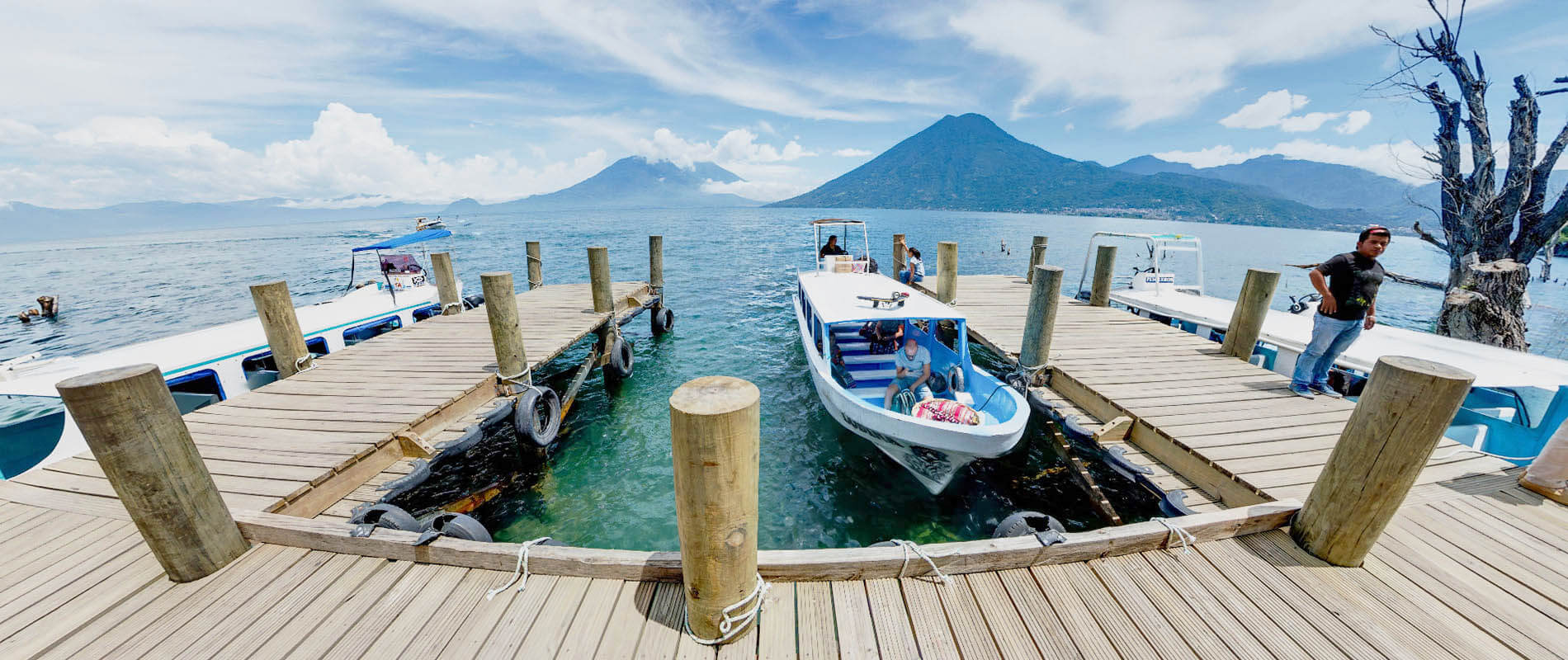
Guatemala City, center of trade, religious, and cultural activities: this metropolis presents an array of contrasts between Colonial architecture interspersed with modern buildings and important museums and historical monuments that offer visitors a unique experience. Its infrastructure, tour destinations and services, and modern shopping centers have made it a regional hub for congresses, conventions and shopping.
Guatemala City is the ideal destination for meetings in Central America. It has a privileged geographic position and wide range of hotels, great infrastructure and proven experience in the organization of congresses, conventions and incentive trips.
Guatemala has various convention centers in hotels, plus the COPEREX fairground, which offers up to 21,658 square meters for events in 14 different halls.
La Aurora International Airport, the most modern in Central America, operates flights that provide broad and fast connectivity with major cities in the world.
The country’s road infrastructure gives meeting delegates the ability to move easily from one place to another and enjoy complementary activities and tourist attractions such as golf courses or the colonial city of Antigua Guatemala, among others. Our sea ports are ready to welcome cruise ships from the world.
The capital offers convention delegates modern shopping malls and the Historical Center with century’s old buildings and churches. In the heart of the city is the Zona Viva, an area with 5-star hotels and exclusive restaurants. The pleasant climate of the country favors all types of activities and events at any time of the year.
Guatemala has hosted important international events, it has meeting halls, theaters, museums, squares, event venues, convention centers in hotels, as well as international hotel chains. A broad variety of restaurants, suppliers who specialize in event services, professional Congress, conventions and incentive tour operators and language interpretation all contribute to successful meetings. Ground transportation and air connectivity to major cities in the United States, Mexico, Central and South America add to a smooth handling of Convention delegates. All these facilities and services have been tested at international events.
What are the highlights of Guatemala?
– In efficiency in regards to ports of bulk sugar and sugar exporter in Latin America.
Cardamom exporter.
– Exporter of melons, papayas and watermelons.
– Arabica Coffee Exporter and in general Guatemala is positioned in the Top 10 of the Coffee of the World.
– World banana exporter and #2 in platanos.
– Chinese peas exporter.
– Ron Zacapa Centennial recognized by World’s Top 100 Most Valuable Luxury Brands, and # 1 for 5 consecutive years in the ranking of # 1 The Beverage Testing Institute.
Archaeological heritage: with a total volume of 2,800,000 m³ and a height of 170 meters, La Danta is the largest pyramid in the world, even over the pyramids of Egypt, located in the Department of Petén, Guatemala.
Guatemala is the world’s capital for sport fishing for Sailfish. Record of capture and release in boat for 1 day: 124 Sailfish.
Guatemala Conventions Bureau: Is the link between companies, associations and professional organizers of events at an international level with professionals, hotels and local providers of services specialized in meeting tourism – MICE (Meetings, Incentives, Congresses and Exhibitions)



